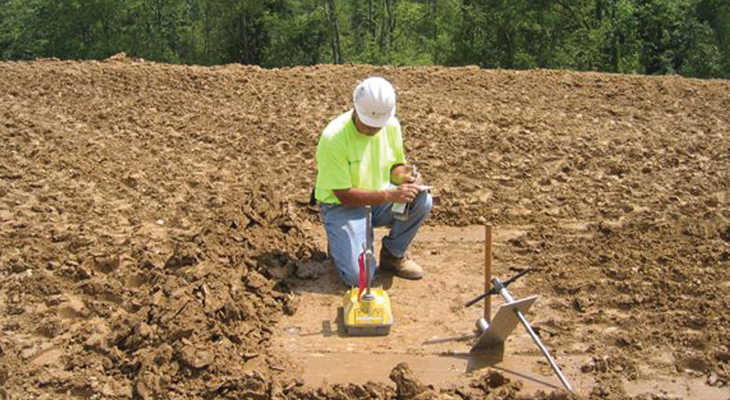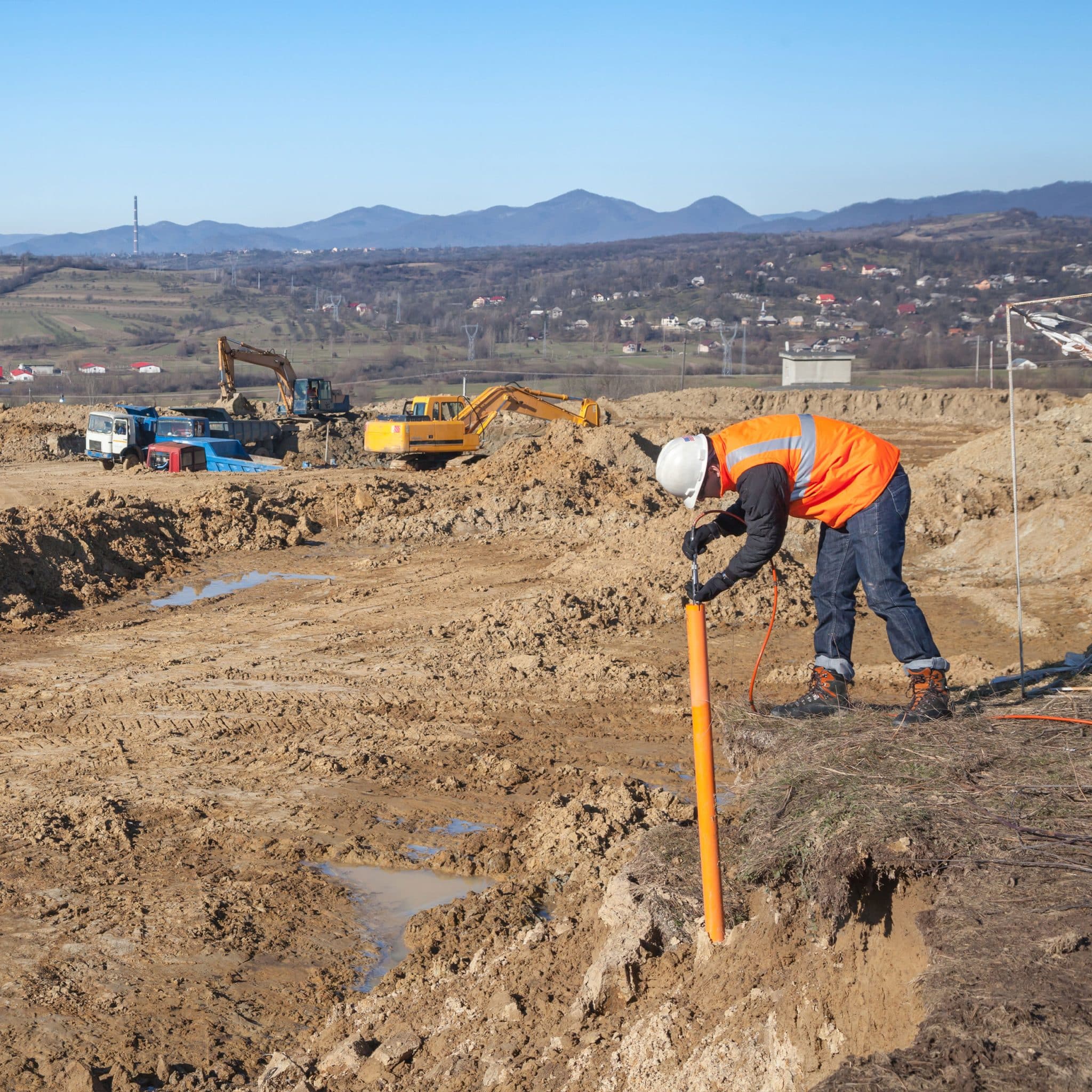Engineer of Record: What You Required to Learn About Their Duties and Impact
Engineer of Record: What You Required to Learn About Their Duties and Impact
Blog Article
The Interdisciplinary Approaches in the Geotechnical Sector: Connecting the Void Between Engineering, Geology, and Environmental Scientific Research for Ideal Task End Results
The combination of design, geology, and ecological scientific research within the geotechnical sector is not merely useful; it is important for accomplishing optimum job outcomes. This interdisciplinary collaboration fosters a thorough understanding of complex site conditions, allowing for ingenious options to emerge. By taking a look at crucial duties and effective case studies, we can uncover the dynamic interaction that drives project success. Nonetheless, obstacles remain in effectively managing these multidisciplinary initiatives, raising inquiries concerning prospective innovations and future trends. What methods might emerge to facilitate this essential partnership and enhance the efficacy of geotechnical practices?
Relevance of Interdisciplinary Partnership
The significance of interdisciplinary partnership in the geotechnical industry can not be overstated. Efficient geotechnical projects need the integration of varied expertise from numerous fields, including engineering, geology, and environmental science. This collaboration guarantees that all elements of a task are taken into consideration, causing detailed remedies that address complex difficulties.
When working in seclusion,Interdisciplinary cooperation cultivates advancement by enabling professionals to share understandings and methodologies that might not be obvious. By leveraging the staminas of numerous disciplines, groups can identify possible dangers, maximize design processes, and enhance the sustainability of geotechnical projects. Moreover, such partnership promotes an alternative understanding of site-specific conditions, which is important for precise evaluation and decision-making.
The intricacy of geotechnical tasks demands a coordinated approach to problem-solving. When designers, geologists, and environmental researchers interact, they can develop a cohesive technique that aligns technological needs with environmental factors to consider and regulative conformity. This synergy not just enhances project results however likewise adds to the long-lasting durability of framework. Ultimately, interdisciplinary collaboration is essential for advancing finest methods and accomplishing excellence in the geotechnical sector.
Trick Functions of Each Self-control
Partnership among numerous disciplines is not simply helpful; it is crucial for the effective implementation of geotechnical projects. Each discipline-- design, geology, and ecological scientific research-- plays an unique yet interconnected function that adds to predict efficacy and sustainability.
Geotechnical designers are primarily liable for making structures and ensuring architectural stability. They evaluate soil and rock homes to examine load-bearing abilities, offering essential data for safe building techniques. Their expertise allows the formulation of ingenious remedies to complicated challenges.

Environmental scientists analyze the potential effects of construction on communities and water sources. They perform ecological evaluations and establish mitigation strategies to reduce negative impacts. By incorporating ecological considerations, they make sure conformity with laws and advertise sustainability throughout the job lifecycle.
Case Studies of Successful Assimilation
Successful combination of geotechnical self-controls can be exhibited through various instance researches that highlight the performance of teamwork in addressing intricate design difficulties. One remarkable instance is the building and construction of the Hong Kong-- Zhuhai-- Macau Bridge, where a joint method entailing geotechnical design, geology, and ecological science was important. Designers and geologists operated in unison to evaluate the seabed conditions and optimize the structure design, guaranteeing stability and lessening ecological influence.
Another impactful instance is the improvement of incline security in the San Francisco Bay Area, where an interdisciplinary group integrated geotechnical analysis with environmental analyses. By integrating hydrological research studies and geological surveys, the team efficiently identified potential landslide threats and executed effective mitigation actions, enhancing safety and security and sustainability.
Additionally, the redevelopment of Brownfield sites often needs a multidisciplinary method. In one instance in Chicago, collaboration among geotechnical designers, ecological scientists, and metropolitan planners caused the effective remediation of infected soil, permitting the secure transformation of the website right into a neighborhood park. These case research studies highlight that interdisciplinary partnership not only addresses technological obstacles but also promotes cutting-edge services that profit both neighborhoods and jobs.
Obstacles in Multidisciplinary Projects

Furthermore, coordinating routines and process among various teams can be bothersome, particularly when each technique has one-of-a-kind job landmarks and deliverables. This imbalance can cause hold-ups and raised expenses. The difficulty of source allowance also looms huge; making certain that specialized knowledge is available at vital junctures calls for cautious planning and insight.
Last but not least, regulatory compliance postures another substantial difficulty. Each self-control might encounter various regulatory frameworks, and straightening these needs to fulfill project objectives can be complex and lengthy. Attending to these challenges necessitates solid management and effective communication techniques to promote cooperation and make certain that multidisciplinary teams function cohesively in the direction of shared objectives.
Future Trends in Geotechnical Practices
As the geotechnical market evolves, arising trends are improving practices to resolve the geotechnical engineers difficulties dealt with in multidisciplinary jobs - geotechnical engineers. One significant trend is the enhanced integration of sophisticated technologies, such as synthetic intelligence and device learning, right into geotechnical evaluation and layout. These innovations boost predictive modeling and danger analysis, enabling engineers to make even more enlightened choices throughout the task lifecycle

Furthermore, the fostering of digital twins and real-time tracking systems is coming to be a lot more prevalent. These devices help with ongoing assessment of soil problems and architectural efficiency, permitting prompt treatments when concerns develop.
Verdict
In verdict, the assimilation of design, geology, and ecological science is essential for achieving optimum results in the geotechnical market. Effective situation researches illustrate the advantages of this strategy, while acknowledging the difficulties faced in multidisciplinary jobs.
The combination of engineering, geology, and environmental scientific research within the geotechnical market is not merely helpful; it is important for achieving optimum task results. Effective geotechnical jobs call for the integration of diverse proficiency from different fields, including engineering, geology, and ecological scientific research.Navigating the complexities of multidisciplinary projects in the geotechnical sector presents numerous significant obstacles.As the geotechnical market evolves, emerging trends are improving techniques to deal with the challenges faced in multidisciplinary projects. Geotechnical engineers are progressively collaborating with environmental researchers to make certain that tasks straighten with sustainability goals and abide with regulative requirements.
Report this page